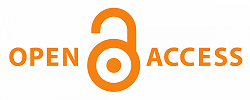EXPLORING THE GENDER PERSPECTIVE WORK-LIFE BALANCE OF STATE UNIVERSITIES AND COLLEGES’ MIDDLE-LEVEL MANAGERS AND TEACHERS
Abstract
This study investigates the gender perspective work-life balance (WLB) among middle-level managers and teachers in state universities and colleges (SUCs), with a specific focus on developing a gender-based WLB framework. Seven objectives guided the research, including profiling respondents based on age, sex, civil status, educational attainment, and designation; assessing WLB and its four elements; understanding respondents' definitions of work- life balance; exploring feelings associated with achieving WLB; identifying strategies for performing multiple roles;and examining significant differences in WLB based on profiles.
The research utilized a mixed-methods approach with a sequential explanatory design and purposive sampling, targeting middle-level managers and teachers in four selected SUCs in Region III. The triangulation of quantitative and qualitative data aimed to provide a comprehensive understanding of work-life balance.
Findings reveal a diverse profile of respondents, with the majority being middle-aged, female, married, holding MA/MS degrees, and designated as program heads/chairs/coordinators. The overall WLB is characterized as borderline, with elements like family, self, work, and personal satisfaction receiving a neutral level of priority. Respondents define WLB as achieving equilibrium through time management, equal prioritization, and satisfaction in both work and personal life.
The study concludes that participants often experience stress and guilt while striving for WLB, employing Smart Planning through proper time management, prioritization, and task delegation. While there is no significant difference in WLB based on most demographic profiles, variations exist in certain elements.
References
The research utilized a mixed-methods approach with a sequential explanatory design and purposive sampling, targeting middle-level managers and teachers in four selected SUCs in Region III. The triangulation of quantitative and qualitative data aimed to provide a comprehensive understanding of work-life balance.
Findings reveal a diverse profile of respondents, with the majority being middle-aged, female, married, holding MA/MS degrees, and designated as program heads/chairs/coordinators. The overall WLB is characterized as borderline, with elements like family, self, work, and personal satisfaction receiving a neutral level of priority. Respondents define WLB as achieving equilibrium through time management, equal prioritization, and satisfaction in both work and personal life.
The study concludes that participants often experience stress and guilt while striving for WLB, employing Smart Planning through proper time management, prioritization, and task delegation. While there is no significant difference in WLB based on most demographic profiles, variations exist in certain elements.





